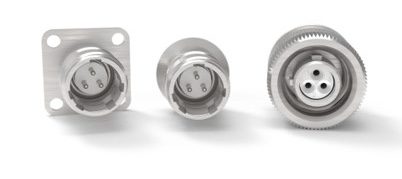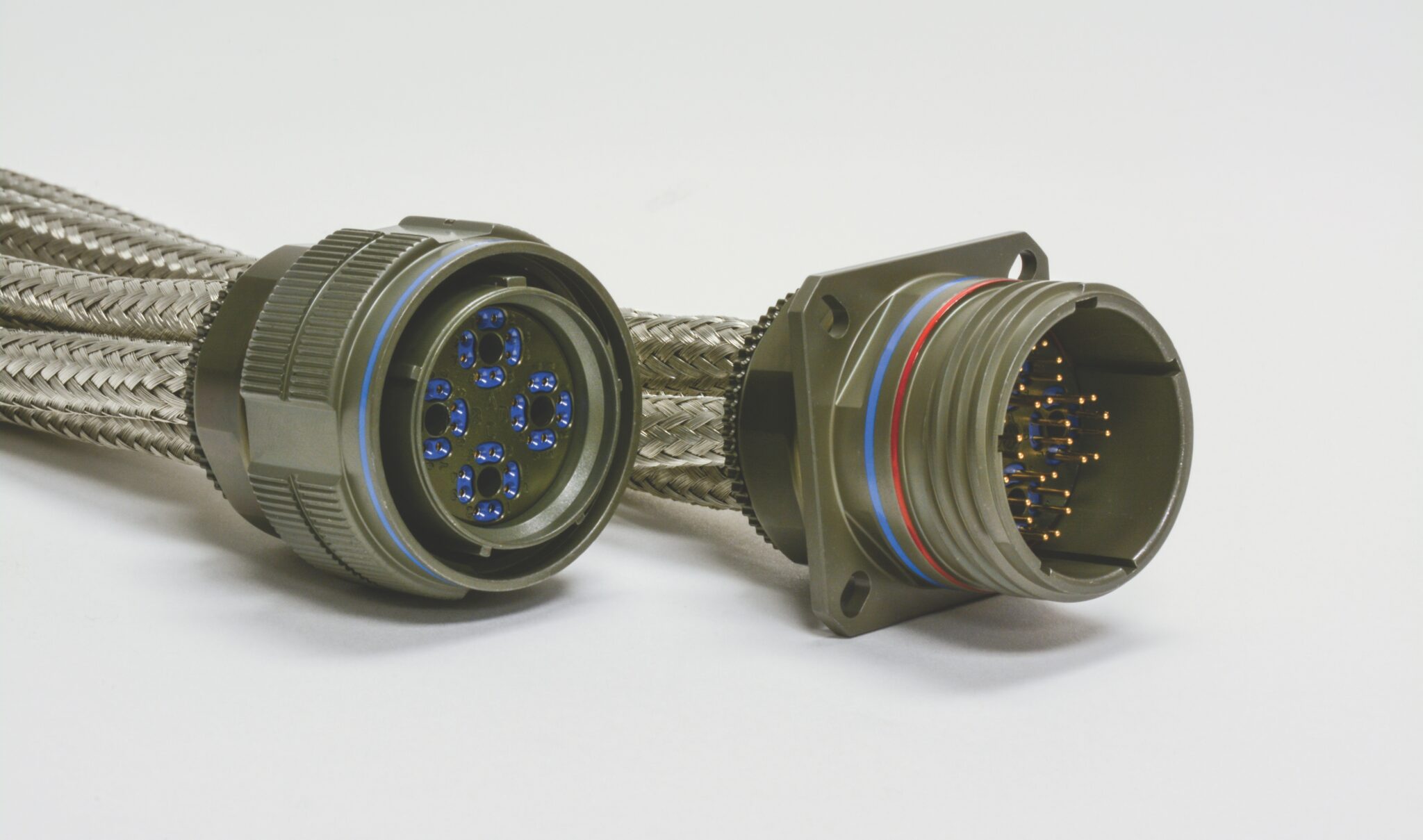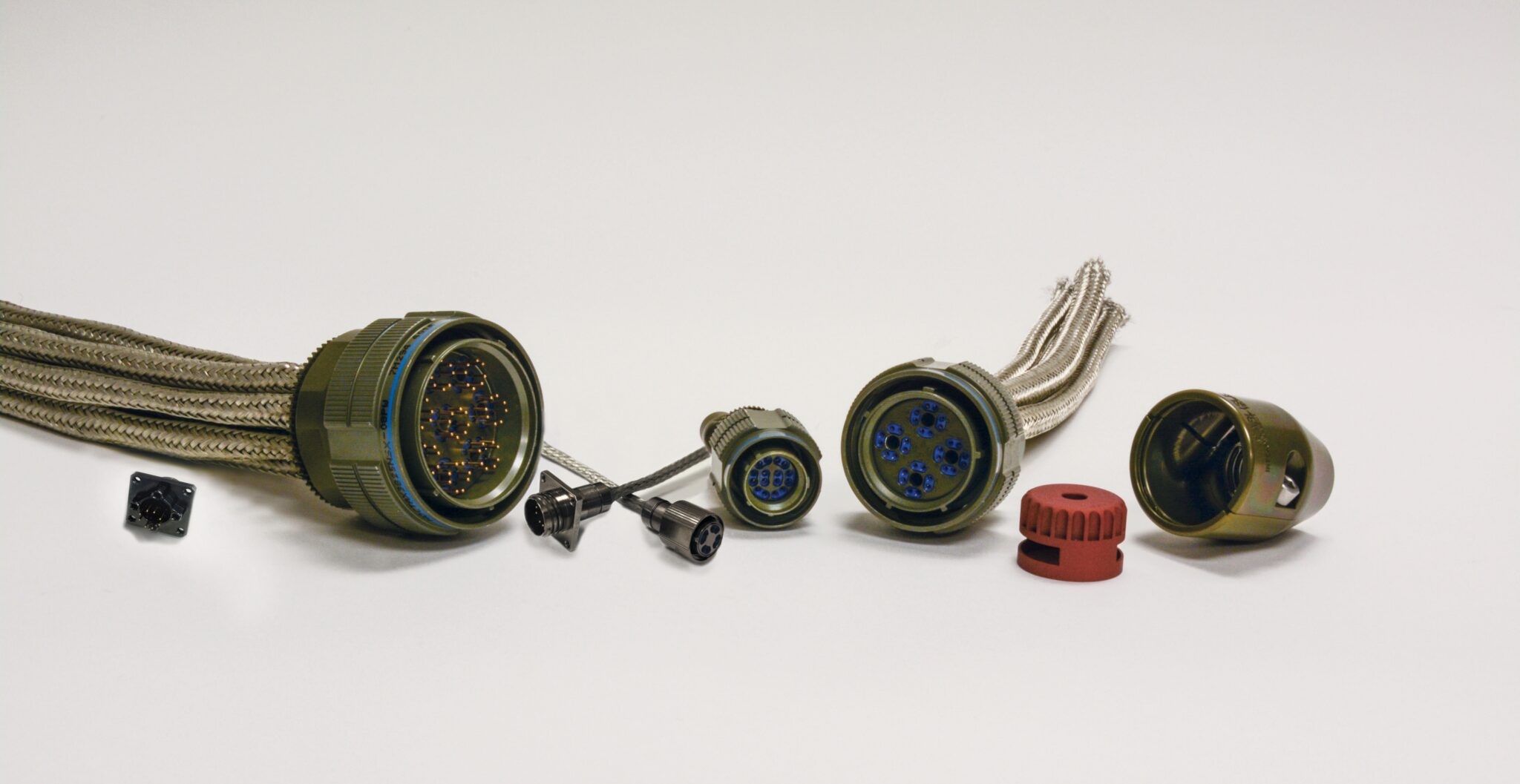Harsh Environment Connectors: Standards vs. Real-World
Technical or MIL-Spec standards are often the minimum criteria for compliance. When the real expectation is performance beyond a standard, innovative, faster, and longer-lasting components are needed.

Aerospace, defense, and industrial customers continually raise the bar for their performance requirements for rugged duty and harsh environment connectors. Not only must the current requirements be met, future requirements for durability and data transfer performance must be anticipated with forward-looking component designs. The design and performance envelope is continually pushed as customers rarely seek “just enough” performance. Their need is always for more performance and for connectors that will support future technology growth.
In today’s market, industry technical standards or MIL-Spec standards may not be enough to match real-world technical performance demands. In most applications, standards are more likely to be the minimum criteria for compliance, and the real expectation is performance beyond a standard. Innovative, faster, and longer-lasting components are needed to meet these customers’ expectations.
The challenges for the connector manufacturer to meet customer expectations are many. Designs must suppress the environmental impact of exposure to humidity, temperature extremes, corrosive fluids, and fine abrasive particulate matter like sand, either individually or in combination. In addition, connectors must survive tens of thousands of hours of low- to high-amplitude vibration, especially in engine, rotorcraft, mining, and downhole drilling environments.
The physical stress from crews performing maintenance is another challenge. During routine maintenance activities of component inspections, LRU replacement, or equipment upgrades, connectors will be cycled, disconnected, and reconnected. Every time the connector is separated and reconnected creates an opportunity for it to be inadvertently damaged.
Coupled with the need for rugged construction is the ever-increasing requirement for consistent high-rate transfer with very high signal integrity under the harshest of environmental, temperature, and vibration conditions.
High-Temperature Connectors (The Hotter, the Better)
High-temperature applications are among the most challenging for harsh-duty connectors. High-temperature connectors require intricate specialized designs and materials to meet the exacting specifications for reliable, high-fidelity signals for critical operations in high-temperature environments. The mission profiles for high-temperature connectors include applications in high heat zones inherent to engine environments, oil exploration and geothermal environments, solar panels, power generation, industrial, and military/defense applications. Common interfaces are probes, signal transfer devices, thermocouples, and pressure transducers.
High-temperature connectors are frequently configured to fit in industry-standard MIL-DTL-38999 or EN2997 connector shells variably sized for two or three contacts. The MIL-DTL-38999 is the most common industry standard and details a temperature range -65 °C to +200 °C.

CarlisleIT Ultra High Temperature Connectors
Certain EN2997 specification connectors will support a 260 °C maximum temperature. Some connector manufacturers cite a 300 °C maximum temperature for their high-temperature products. One leading manufacturer of custom connectors can supply an ultra-high-temperature EN2667 connector with a 405 °C maximum continuous duty, 450 °C maximum limit connector (greater than double the MIL-DTL-38999 high limit specification), and 145 °C higher than the standard EN2667 specification.
The materials used for a high-temperature connector need to be physically durable and dimensionally stable in high-heat environments. Titanium is an optimal shell material offering superior corrosion resistance, conductivity, and light weight qualities in high-heat applications. Plated steel shells can be used, but the long-term durability of plated surfaces can be compromised by heat and by the physical effects of scratches and abrasions. A simple scratch in a plated surface will expose the bare base material to corrosive environments. In contrast, a scratch in a titanium component is a minimal concern due to the corrosion-resistant qualities throughout the base material.
The core of the high-temperature connector is typically a ceramic insert which provides heat resistance and stability. However, ceramic materials are vulnerable to cracking due to vibration or shock loading and may have limitations when used in a high vibration or shake load environment. The most successful high-temperature connectors use exotic high-specification composite ceramic materials which balance vibration resilience and high-temperature performance.
Ultimately, high-temperature connectors must provide reliable, high-speed data transfer between the launch signal and receiving signal devices. Connecting cables that can sustain high data transfer rates over long wire run lengths are important to the equation, but the connectors are critical components at the launch signal and receiving signal connection. Overall, the entirety of the connector design (temperature limits, termination features, and resistance to EMI and environmental factors) define the connector, not just one specification.
38999 Harsh-Duty Connectors
The MIL-DTL-38999 specification is the most common harsh environment connector and is found in virtually all aerospace and military applications and a number of industrial applications. A tried and true design, the MIL-DTL-38999 has roots in designs and specifications implemented 75 years ago. It is safe to say that MIL-DTL-38999 specification connectors will remain in mainline production throughout and beyond the lifetime of anyone who is reading this now.
The 38999 is successful in that the common features, such as physical interface, mounting, technical specifications for conductivity, EMI, and environmental factors, are the same over a range of connector diameter sizes, small to large. Base materials of steel, aluminum, or composite materials are common, as well as specialty surface finishes for cosmetic and environmental purposes for all manner of harsh environments and rugged duty applications.
In short, the 38999 connector offers no surprises and is an industry standard due to its wide range of proven characteristics.

Octax connector shown with MIL-DTL-38999 configuration
The features that make the 38999 connector an outstanding choice for harsh, rugged duty may result in some compromises and limitations for applications. However, engineered solutions ensure this connector’s ongoing viability.
For example, the inherent ruggedness of 38999 can potentially make these connectors too heavy for use on weight-critical airframes. This issue can be mitigated by using lighter, lower-cost composite material connector shells, which can reduce the weight of an assembled connector by 20%. Individually that doesn’t seem like much, but large aircraft can use many hundreds of connectors, and the weight savings add up. Composite connectors are gaining wider market acceptance due to the balance between light weight and rugged duty performance.
The physical properties of the 38999 connector can also be a challenge for data transfer. Standard design 38999 connectors will provide good 1 Gb/s signal transfer. However, modern designs for small multipin, segmented connectors and high signal density connectors can provide 10 Gb/s and fit within 38999 shell sizes. These high-density connectors, by virtue of their design, will outperform standard 38999 connectors in harsh environment applications which require very high data transfer rates.
Rugged-Duty Performance with Repairability
The repairability features of a harsh environment connector are every bit as important as the performance ratings. Connectors must have the capability for rapid repair and quick return to service in applications such as passenger planes that fly on tight schedules; delays or service interruptions are unacceptable due to their cascading effect and the subsequent high financial impact.
Within the industry, the repair schemes are not entirely standard and can vary from manufacturer to manufacturer. Some connector and wire assemblies are not field repairable and require the complete replacement of a cable assembly. The affected cable assembly is returned to the factory for repair, or a spare cable assembly is installed to keep the affected system up and running. This makes sense for some defense articles where field repair is not practical and removal and replacement can be accomplished quickly.
Complete replacement is not a good option for industrial or commercial aircraft applications in which accessibility is difficult or the length of cable assemblies makes it impractical. The most effective solution in that case is field-repairable connectors that can be serviced by technicians on site. Field-repairable connectors employ various service methods. Several manufacturers require special service parts and special tools to accomplish repairs. The most practical solution is a connector that can be repaired with commonly available avionics indent crimp service tools and AS39029 contacts.
An unusual but critically important consideration for repairable connectors is whether the connector requires a heat gun for shrink tubing or curing of potting materials. Prior to making any repair to a passenger aircraft requiring heat or a flame source, passengers must deplane, and the aircraft must be towed to a fire-safe area with firefighting equipment on standby. A simple repair for a connector, therefore, can become very complicated and take many hours, removing the aircraft from service for extended periods. Crimp connectors assembled with common avionics hand tools eliminate the complexities of fire-safe repairs.
How to select a harsh environment connector
Harsh environment connector selection for long-term use requires consideration of the following qualities:
- Durability
- Weight
- Signal and data density relative to size
- Capacity for future expansion
- Signal integrity
- High-limit temperature ratings for maximum performance and future expansion
- Price versus performance

The Octax Family of connectors provides the widest range of options for size and signal configuration.
Choosing harsh environment connectors is not always a simple matter of whether the connector meets a standard specification at the lowest cost. The least expensive connector will probably meet the minimum requirements but will fall far short of real-world extended requirements. Connectors that are more expensive on a single-part basis may be the best value in terms of overall capability and future expansion. As a simple rule, always plan for higher performance relative to connector design. Selecting the best connector on overall performance instead of basic qualifications and lowest price will help ensure readiness to meet future needs.
Visit Carlisle Interconnect Technologies to learn more.
Like this article? Check out our other Connector Basics articles, our Harsh Environment Articles, and our 2023 and 2024 Article Archives.
Subscribe to our weekly e-newsletters, follow us on LinkedIn, Twitter, and Facebook, and check out our eBook archives for more applicable, expert-informed connectivity content.





